Optimising blog posts manually always felt time-consuming and confusing for me. And I was always looking for something that helps me to simplify SEO effectively.
I decided to try Rank Math’s Content AI because it promised real-time suggestions and keyword optimisation for better results.
The idea was to improve titles, headings, meta descriptions, and overall content structure without spending hours guessing the best approach.
In this article, I’ll share my honest experience with Content AI and explain how it changed the way I optimise my blog posts.
Why I Wanted to Test Rank Math’s Content AI on My Blog
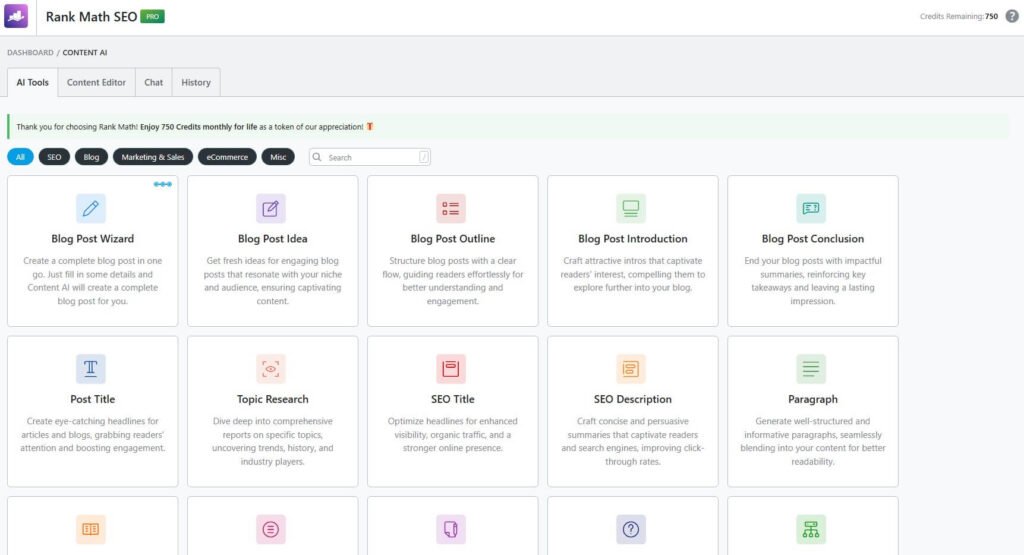
I wanted to see if Content AI could optimise blog posts faster and more accurately. Manual SEO often felt confusing.
My goal was to improve keyword placement, meta descriptions, and headings without spending hours analysing each post individually.
I was curious how the AI suggestions would affect readability, SEO score, and overall content performance on my website.
Finally, I wanted to test if Content AI could help generate ideas and structure content efficiently for higher Google rankings.
Getting Started Was Easier Than I Thought
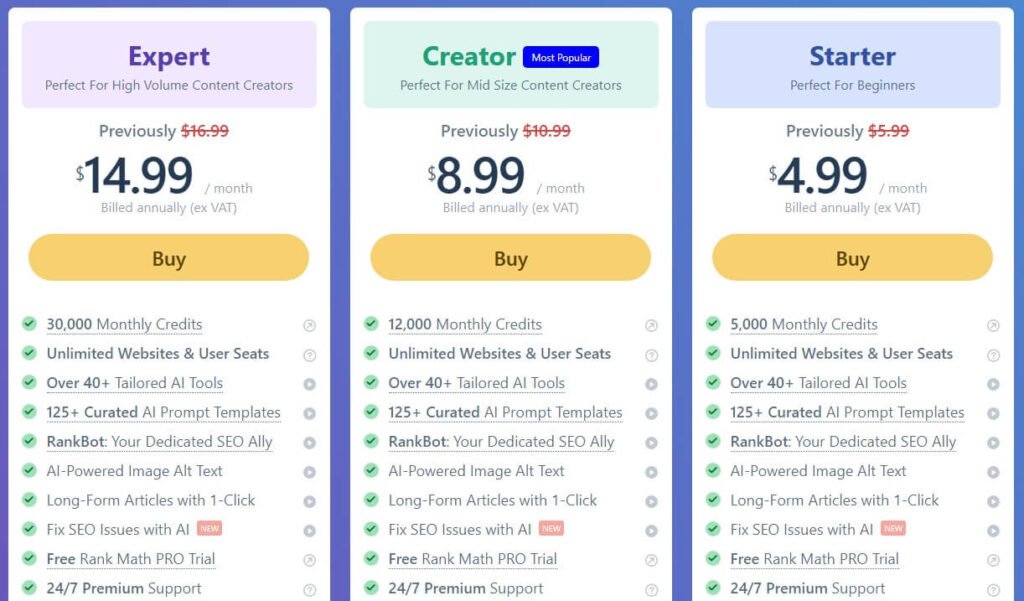
Setting up Content AI was much easier than I expected, and the process was surprisingly smooth. I didn’t have to waste time figuring out complex configurations.
Since I already upgraded to Rank Math PRO, I instantly received free Content AI credits with my subscription plan. The Pro plan gave me 5,000 credits to start experimenting.
I also noticed that higher plans like the Business plan, offer 12,000 credits, and the Agency plan provides 30,000 credits. This makes scaling Content AI usage easy for bigger websites.
For those not using PRO, Rank Math sells Content AI separately with monthly plans ranging from $4.99 to $14.99. The credits match exactly with the PRO tiers.
The First Blog Post I Optimised with Content AI
When I first decided to test Rank Math’s Content AI, I picked one of my weakest blog posts. It was a guide I had written months ago, but it never ranked well or brought in the traffic I expected.
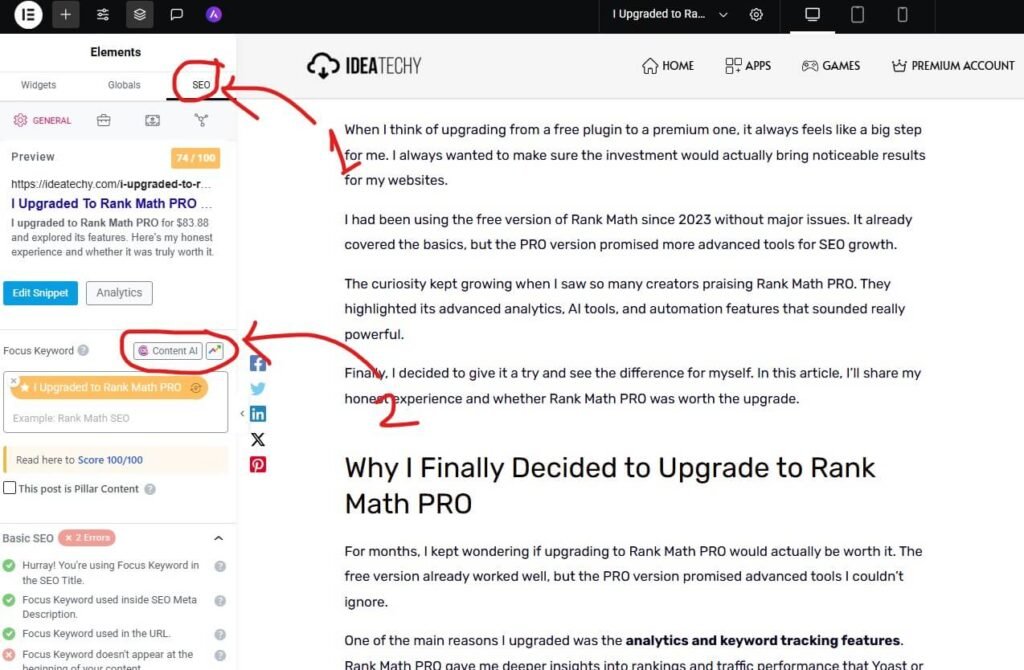
To optimise an article using Rank Math content AI, first, you need to open the post. For this article, I’m going with the Elementor editor. After opening the article with Elementor editor, I click on SEO, then Content AI.
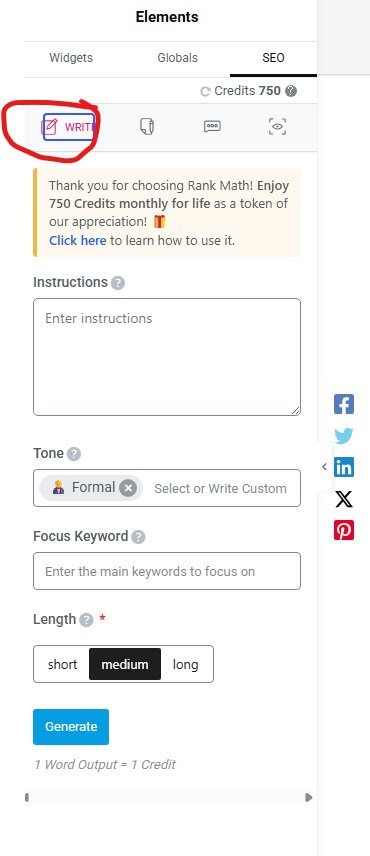
Then you’ll get three options: Write, AI tools, and chat option. Let’s think if you want to write something, then choose the first option and give the instruction about your topic, then choose your tone, focus keyword, and the length. Once you command Rank Math content AI, then it’ll write whatever you command.
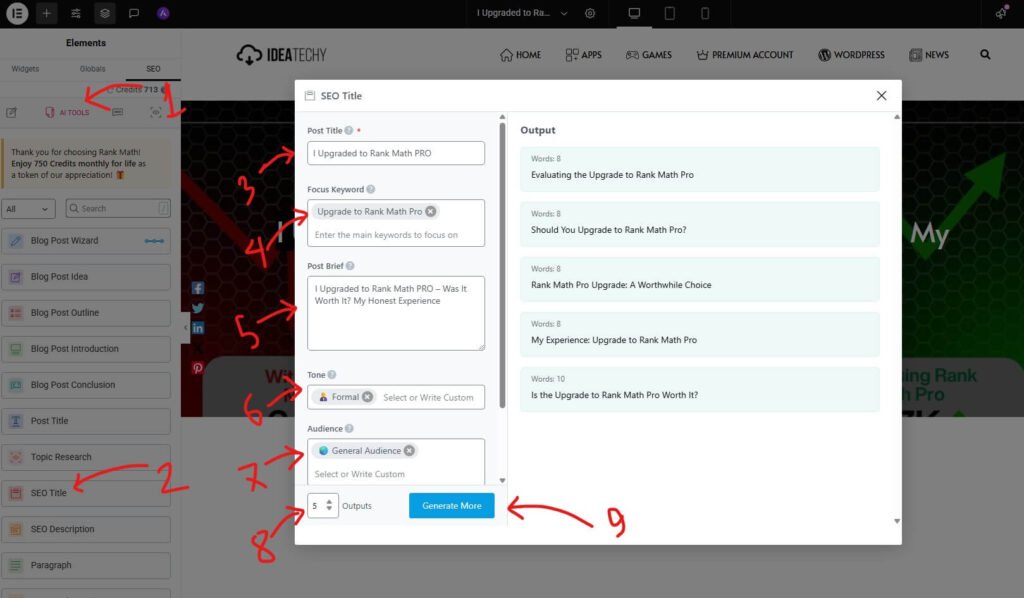
Let’s think if you want to create an SEO title using Rank Math content AI. For this, you need to click on the AI tools, then choose SEO title, and then this pop-up will appear. Now you need to type your post title, focus keyword, post brief, tone, audience, output number, and lastly click on the Generate now button.
Then Rank Math Content AI will generate all the top-picked blog SEO titles for your article. But in any case, if you didn’t like it, then you can generate another one. If your prompt is good, then you’ll get better output.
A few weeks later, I checked the results, and to my surprise, the post started climbing up the rankings. From being almost invisible, it began showing up on the first page for several keywords.
That single experience proved to me that Content AI wasn’t just a fancy tool — it actually helped transform one of my underperforming posts into a piece of content that could compete on Google.
Keyword Suggestions That Actually Made Sense
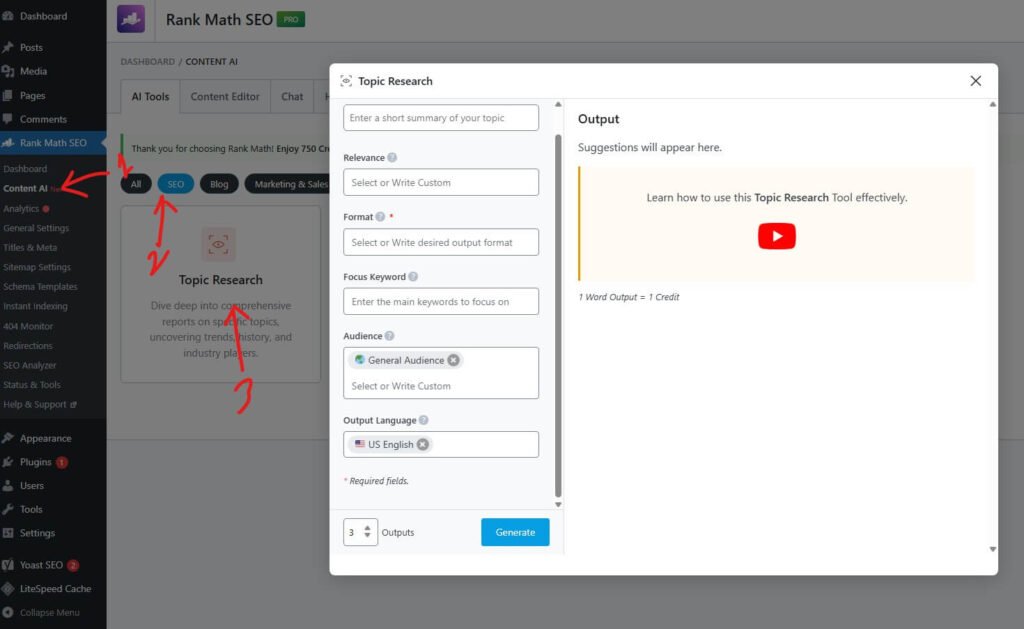
I’ve tried so many tools for keyword research, and most of the time I either got results that were too competitive or didn’t match my writing style.
With Rank Math’s Content AI, the process felt much simpler. From my WordPress dashboard, I went to Rank Math SEO → Content AI → SEO → Topic Research. After choosing my focus keyword, setting the tone and language, I clicked generate.
The results actually surprised me. The suggestions weren’t random or forced—they were directly related to my topic and felt natural to use in my blog post. I could easily see how these keywords would help me write better-structured content while also targeting what readers are really searching for.
For the first time, keyword research didn’t feel like a guessing game. Instead, I had a clear list of ideas that made sense and fit right into my article.
How Content AI Helped Me Improve Readability
Before using Content AI, I often struggled with making my blog posts easy to read. My sentences were sometimes too long, and headings weren’t structured well.
After analysing a post with Content AI, I received suggestions on sentence length, paragraph breaks, and heading hierarchy. Implementing these tips instantly made my content more digestible.
The tool also highlighted areas where I could use transition words and simpler phrases. This helped me keep my audience engaged without sacrificing SEO.
Overall, Content AI guided me to write in a clearer, more structured way. My posts now feel smoother and more enjoyable for readers while staying optimized for search engines.
Discovering Content Gaps I Never Noticed Before
While using Content AI, I realized it could highlight areas my blog posts were missing. I hadn’t noticed some important subtopics before.
The tool suggested related questions and keywords that I hadn’t included, which opened my eyes to gaps in my content. Filling these gaps could make my posts more complete.
By addressing these missing points, I could provide more value to readers and increase my chances of ranking higher on Google. The suggestions felt practical and easy to implement.
After updating the posts with these insights, my articles became more detailed, thorough, and structured. Content AI helped me cover topics more comprehensively than I ever did manually.
Did My Blog Posts Really Start Ranking Better?
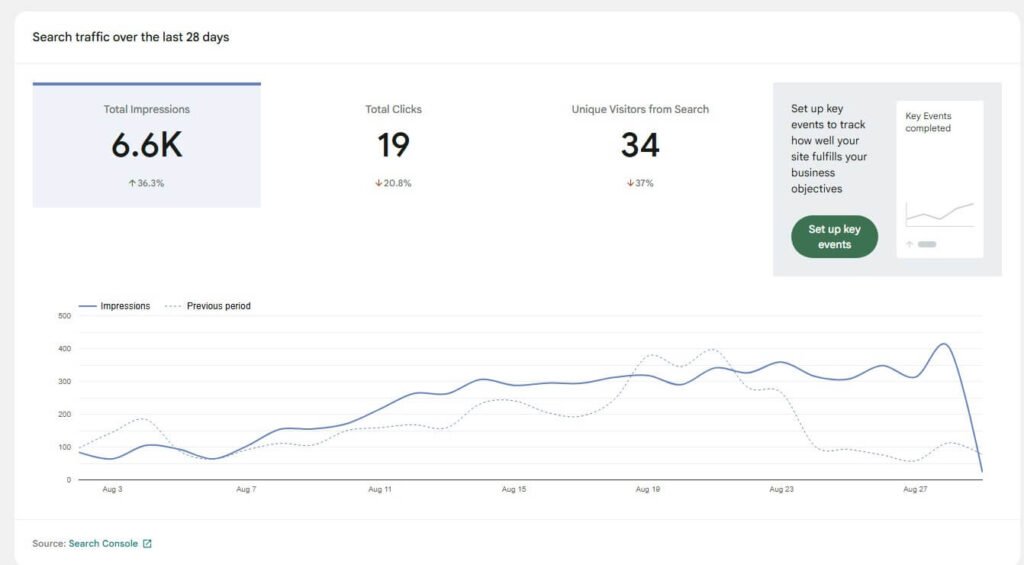
Before I started using Rank Math Content AI, my daily impressions were only 84 on August 2nd. It felt frustrating to see little traffic despite my effort.
After optimising my posts with Content AI, the results improved significantly. By August 28th, my daily impressions jumped to 404, showing clear progress in a short period.
The real-time SEO suggestions, keyword guidance, and content gap fixes seemed to directly influence my rankings. It was exciting to see posts move up in Google search results.
Not every post skyrocketed, but the overall trend was undeniable. Content AI made my optimisation smarter, and I finally felt confident in boosting my SEO performance.
The Balance Between My Writing Style and AI Guidance
At first, I was worried Content AI might make my writing sound too robotic or forced. I didn’t want to lose the personal tone that makes my blog unique.
What I found instead was that Content AI acted more like a guide than a replacement. It gave me topic suggestions, keyword ideas, and structure tips without changing my voice.
I still wrote in my natural style, but Content AI reminded me when I missed important SEO opportunities. This balance allowed me to keep my personality while improving optimization.
In the end, my articles sounded like me—but smarter, sharper, and more search-friendly thanks to the AI’s subtle guidance.
Limitations I Found While Using Content AI
While Content AI was definitely helpful, I also noticed some limitations that I think every blogger should be aware of. The first one is how the credit system works. Rank Math cuts 1 credit for every single word it analyses. That means if you’re working on long-form blog posts like I usually do, you’ll burn through credits pretty fast. This made me realize I needed to start with a lot of credits in order to use it consistently.
Another thing I noticed is that while Content AI provides useful keyword and content suggestions, not all of them perfectly match my writing style or my niche. Sometimes I had to ignore a suggestion because it just didn’t sound natural for my audience.
So, while Content AI is a great tool for guidance, it still needs my personal touch to make sure the content feels authentic.
Would I Keep Using Rank Math Content AI for Blogging?
After testing Rank Math’s Content AI on multiple blog posts, I realised it’s more than just an add-on feature. It actually became a part of my daily blogging workflow and helped me simplify a lot of the writing process.
Sure, there are limitations like the credit system, where 1 word = 1 credit, which means I need to start with a lot of credits to make the most out of it. But once I understood how to manage my credits properly, it started to feel like a fair trade for the time and effort it saved me.
What really stood out is how Content AI works as a support system rather than a replacement. It gave me keyword ideas, content suggestions, and even SEO-optimised titles that I might not have thought of on my own.
To summarise, here’s why I’ll keep using it:
- Saves time on keyword research and content outlines
- Keeps me on track with SEO optimization inside WordPress
- Offers fresh ideas without killing my personal writing styleEasy integration with Rank Math PRO and analytics tools
Overall, Rank Math Content AI has proven itself to be a tool worth keeping in my blogging toolkit. It enhances my work, supports my creativity, and makes the whole blogging process more efficient.









